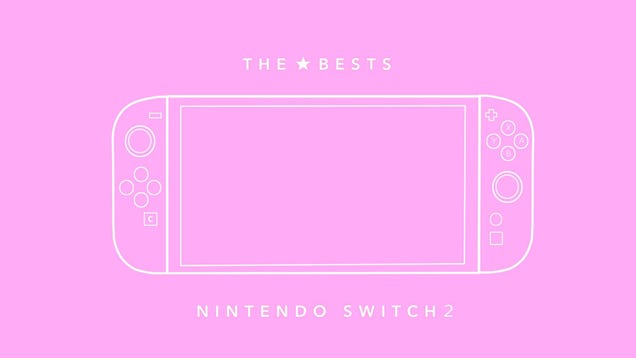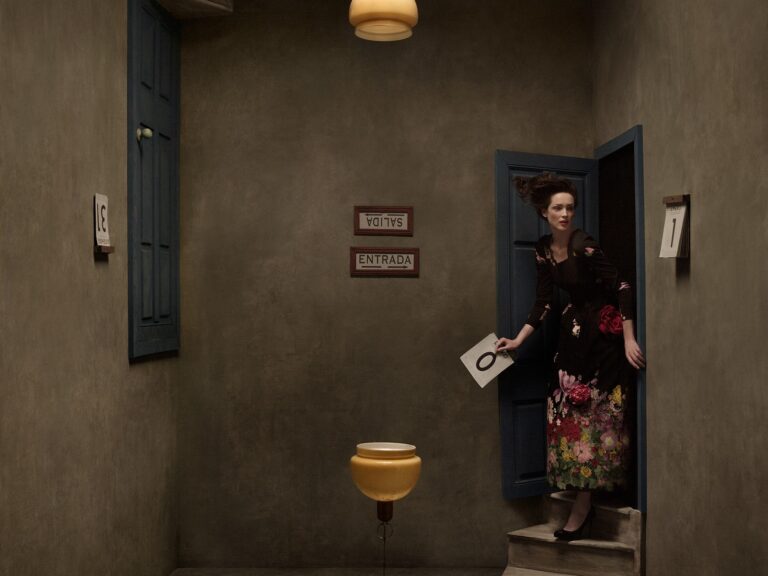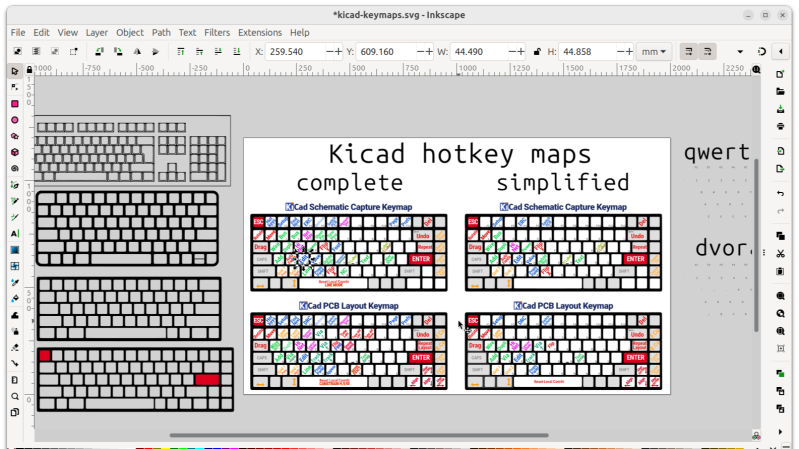Games Inbox: Would Xbox ever shut down Game Pass?
Game Pass – will it continue forever?The Monday letters page struggles to predict what’s going to happen with the PlayStation 6, as one reader sees their opinion of the Switch 2 change over time.
To join in with the discussions yourself email gamecentral@metro.co.uk
Final Pass
I agree with a lot of what was said about the current state of Xbox in the Reader’s Feature this weekend and how the more Microsoft spends, and the more companies they own, the less the seem to be in control. Which is very strange really.The biggest recent failure has got to be Game Pass, which has not had the impact they expected and yet they don’t seem ready to acknowledge that. If they’re thinking of increasing the price again, like those rumours say, then I think that will be the point at which you can draw a line under the whole idea and admit it’s never going to catch on.
But would Microsoft ever shut down Game Pass completely? I feel that would almost be more humiliating than stopping making consoles, so I can’t really imagine it. Instead, they’ll make it more and more expensive and put more and more restrictions on day one games until it’s no longer recognisable.Grackle
Panic button
Strange to see Sony talking relatively openly about Nintendo and Microsoft as competition. I can’t remember the last time they mentioned either of them, even if they obviously would prefer not to have, if they hadn’t been asked by investors.At no point did they acknowledge that the Switch has completely outsold both their last two consoles, so I’m not sure where their confidence comes from. I guess it’s from the fact that they know they’ve done nothing this gen and still come out on top, so from their perspective they’ve got plenty in reserve.
Expert, exclusive gaming analysis
Sign up to the GameCentral newsletter for a unique take on the week in gaming, alongside the latest reviews and more. Delivered to your inbox every Saturday morning.
Having your panic button being ‘do anything at all’ must be pretty reassuring really. Nintendo has had to work to get where they are with the Switch but Sony is just coasting it.Lupus
James’ LadderJacob’s Ladder is a film I’ve been meaning to watch for a while, and I guessed the ending quite early on, but it feels like a Silent Hill film. I don’t know if you guys have seen it but it’s an excellent film and the hospital scene near the end, and the cages blocking off the underground early on, just remind me of the game.
A depressing film overall but worth a watch.Simon
GC: Jacob’s Ladder was as a major influence on Silent Hill 2 in particular, even the jacket James is wearing is the same.
Email your comments to: gamecentral@metro.co.uk
Seeing the future
I know everyone likes to think of themselves as Nostradamus, but I have to admit I have absolutely no clue what Sony is planning for the PlayStation 6. A new console that is just the usual update, that sits under your TV, is easy enough to imagine but surely they’re not going to do that again?But the idea of having new home and portable machines that come out at the same time seems so unlikely to me. Surely the portable wouldn’t be a separate format, but I can’t see it being any kind of portable that runs its own games because it’d never be as powerful as the home machine. So, it’s really just a PlayStation Portal 2?
Like I said, I don’t know, but for some reason I have a bad feeling about that the next gen and whatever Sony does end up unveiling. I suspect that whatever they and Microsoft does it’s going to end up making the Switch 2seem even more appealing by comparison.Gonch
Hidden insight
I’m not going to say that Welcome Tour is a good game but what I will say is that I found it very interesting at times and I’m actually kind of surprised that Nintendo revealed some of the information that they did. Most of it could probably be found out by reverse engineering it and just taking it apart but I’m still surprised it went into as much detail as it did.You’re right that it’s all presented in a very dull way but personally I found the ‘Insights’ to be the best part of the game. The minigames really are not very good and I was always glad when they were over. So, while I would not necessarily recommend the gameI would say that it can be of interest to people who have an interest in how consoles work and how Nintendo think.Mogwai
Purchase privilege
I’ve recently had the privilege of buying Clair Obscur: Expedition 33 from the website CDKeys, using a 10% discount code. I was lucky enough to only spend a total of £25.99; much cheaper than purchasing the title for console. If only Ubisoft had the foresight to see what they allowed to slip through their fingers. I’d also like to mention that from what I’ve read quite recently ,and a couple of mixed views, I don’t see myself cancelling my Switch 2. On the contrary, it just is coming across as a disappointment.From the battery life to the lack of launch titles, an empty open world is never a smart choice to make not even Mario is safe from that. That leaves the upcoming ROG Xbox Ally that’s recently been showcased and is set for an October launch.
I won’t lie it does look in the same vein as the Switch 2, far too similar to the ROG Ally X model. Just with grips and a dedicated Xbox button. The Z2 Extreme chip has me intrigued, however. How much of a transcendental shift it makes is another question however. I’ll have to wait to receive official confirmation for a price and release date. But there’s also a Lenovo Legion Go 2 waiting in the wings. I hope we hear more information soon. Preferably before my 28th in August.Shahzaib Sadiq
Tip of the iceberg
Interesting to hear about Cyberpunk 2077 running well on the Switch 2. I think if they’re getting that kind of performance at launch, from a third party not use to working with Nintendo hardware, that bodes very well for the future.I think we’re probably underestimating the Switch 2 a lot at the moment and stuff we’ll be seeing in two or three years is going to be amazing, I predict. What I can’t predict is when we’ll hear about any of this. I really hope there’s a Nintendo Direct this week.Dano
Changing opinions
So just a little over a week with the Switch 2 and after initially feeling incredibly meh about the new console and Mario Kart a little more playtime has been more optimistic about the console and much more positive about Mario Kart World.It did feel odd having a new console from Nintendo that didn’t inspire that childlike excitement. An iterative upgrade isn’t very exciting and as I own a Steam Deck the advancements in processing weren’t all that exciting either. I can imagine someone who only bough an OG Switch back in 2017 really noticing the improvements but if you bought an OLED it’s basically a Switch Pro.
The criminally low level of software support doesn’t help. I double dipped Street Fighter 6 only to discover I can’t transfer progress or DLC across from my Xbox, which sort of means if I want both profiles to have parity I have to buy everything twice! I also treated myself to a new Pro Controller and find using it for Street Fighter almost unplayable as the L and ZL buttons are far too easy to accidently press when playing.
Mario Kart initially felt like more of the same and it was only after I made an effort to explore the world map, unlock characters and karts, and try the new grinding/ollie mechanic that it clicked. I am now really enjoying it, especially the remixed soundtracks.
I do however want more Switch 2 exclusive experiences – going back through my back catalogue for improved frame rates doesn’t cut it Nintendo! As someone with a large digital library the system transfer was very frustrating and the new virtual cartridges are just awful – does a Switch 2 need to be online all the time now? Not the best idea for a portable system.
So, the start of a new console lifecycle and hopefully lots of new IP – I suspect Nintendo will try and get us to revisit our back catalogues first though.BristolPete
Inbox also-rans
Just thought I would mention that if anyone’s interested in purchasing the Mortal Kombat 1 Definitive Edition, which includes all DLC, that it’s currently an absolute steal on the Xbox store at £21.99.Nick The GreekI’ve just won my first Knockout Tour online race on Mario Kart World! I’ve got to say, the feeling is magnificent.Rable
More Trending
Email your comments to: gamecentral@metro.co.uk
The small printNew Inbox updates appear every weekday morning, with special Hot Topic Inboxes at the weekend. Readers’ letters are used on merit and may be edited for length and content.
You can also submit your own 500 to 600-word Reader’s Feature at any time via email or our Submit Stuff page, which if used will be shown in the next available weekend slot.
You can also leave your comments below and don’t forget to follow us on Twitter.
Arrow
MORE: Games Inbox: Is Mario Kart World too hard?
GameCentral
Sign up for exclusive analysis, latest releases, and bonus community content.
This site is protected by reCAPTCHA and the Google Privacy Policy and Terms of Service apply. Your information will be used in line with our Privacy Policy
#games #inbox #would #xbox #everGames Inbox: Would Xbox ever shut down Game Pass?
Game Pass – will it continue forever?The Monday letters page struggles to predict what’s going to happen with the PlayStation 6, as one reader sees their opinion of the Switch 2 change over time.
To join in with the discussions yourself email gamecentral@metro.co.uk
Final Pass
I agree with a lot of what was said about the current state of Xbox in the Reader’s Feature this weekend and how the more Microsoft spends, and the more companies they own, the less the seem to be in control. Which is very strange really.The biggest recent failure has got to be Game Pass, which has not had the impact they expected and yet they don’t seem ready to acknowledge that. If they’re thinking of increasing the price again, like those rumours say, then I think that will be the point at which you can draw a line under the whole idea and admit it’s never going to catch on.
But would Microsoft ever shut down Game Pass completely? I feel that would almost be more humiliating than stopping making consoles, so I can’t really imagine it. Instead, they’ll make it more and more expensive and put more and more restrictions on day one games until it’s no longer recognisable.Grackle
Panic button
Strange to see Sony talking relatively openly about Nintendo and Microsoft as competition. I can’t remember the last time they mentioned either of them, even if they obviously would prefer not to have, if they hadn’t been asked by investors.At no point did they acknowledge that the Switch has completely outsold both their last two consoles, so I’m not sure where their confidence comes from. I guess it’s from the fact that they know they’ve done nothing this gen and still come out on top, so from their perspective they’ve got plenty in reserve.
Expert, exclusive gaming analysis
Sign up to the GameCentral newsletter for a unique take on the week in gaming, alongside the latest reviews and more. Delivered to your inbox every Saturday morning.
Having your panic button being ‘do anything at all’ must be pretty reassuring really. Nintendo has had to work to get where they are with the Switch but Sony is just coasting it.Lupus
James’ LadderJacob’s Ladder is a film I’ve been meaning to watch for a while, and I guessed the ending quite early on, but it feels like a Silent Hill film. I don’t know if you guys have seen it but it’s an excellent film and the hospital scene near the end, and the cages blocking off the underground early on, just remind me of the game.
A depressing film overall but worth a watch.Simon
GC: Jacob’s Ladder was as a major influence on Silent Hill 2 in particular, even the jacket James is wearing is the same.
Email your comments to: gamecentral@metro.co.uk
Seeing the future
I know everyone likes to think of themselves as Nostradamus, but I have to admit I have absolutely no clue what Sony is planning for the PlayStation 6. A new console that is just the usual update, that sits under your TV, is easy enough to imagine but surely they’re not going to do that again?But the idea of having new home and portable machines that come out at the same time seems so unlikely to me. Surely the portable wouldn’t be a separate format, but I can’t see it being any kind of portable that runs its own games because it’d never be as powerful as the home machine. So, it’s really just a PlayStation Portal 2?
Like I said, I don’t know, but for some reason I have a bad feeling about that the next gen and whatever Sony does end up unveiling. I suspect that whatever they and Microsoft does it’s going to end up making the Switch 2seem even more appealing by comparison.Gonch
Hidden insight
I’m not going to say that Welcome Tour is a good game but what I will say is that I found it very interesting at times and I’m actually kind of surprised that Nintendo revealed some of the information that they did. Most of it could probably be found out by reverse engineering it and just taking it apart but I’m still surprised it went into as much detail as it did.You’re right that it’s all presented in a very dull way but personally I found the ‘Insights’ to be the best part of the game. The minigames really are not very good and I was always glad when they were over. So, while I would not necessarily recommend the gameI would say that it can be of interest to people who have an interest in how consoles work and how Nintendo think.Mogwai
Purchase privilege
I’ve recently had the privilege of buying Clair Obscur: Expedition 33 from the website CDKeys, using a 10% discount code. I was lucky enough to only spend a total of £25.99; much cheaper than purchasing the title for console. If only Ubisoft had the foresight to see what they allowed to slip through their fingers. I’d also like to mention that from what I’ve read quite recently ,and a couple of mixed views, I don’t see myself cancelling my Switch 2. On the contrary, it just is coming across as a disappointment.From the battery life to the lack of launch titles, an empty open world is never a smart choice to make not even Mario is safe from that. That leaves the upcoming ROG Xbox Ally that’s recently been showcased and is set for an October launch.
I won’t lie it does look in the same vein as the Switch 2, far too similar to the ROG Ally X model. Just with grips and a dedicated Xbox button. The Z2 Extreme chip has me intrigued, however. How much of a transcendental shift it makes is another question however. I’ll have to wait to receive official confirmation for a price and release date. But there’s also a Lenovo Legion Go 2 waiting in the wings. I hope we hear more information soon. Preferably before my 28th in August.Shahzaib Sadiq
Tip of the iceberg
Interesting to hear about Cyberpunk 2077 running well on the Switch 2. I think if they’re getting that kind of performance at launch, from a third party not use to working with Nintendo hardware, that bodes very well for the future.I think we’re probably underestimating the Switch 2 a lot at the moment and stuff we’ll be seeing in two or three years is going to be amazing, I predict. What I can’t predict is when we’ll hear about any of this. I really hope there’s a Nintendo Direct this week.Dano
Changing opinions
So just a little over a week with the Switch 2 and after initially feeling incredibly meh about the new console and Mario Kart a little more playtime has been more optimistic about the console and much more positive about Mario Kart World.It did feel odd having a new console from Nintendo that didn’t inspire that childlike excitement. An iterative upgrade isn’t very exciting and as I own a Steam Deck the advancements in processing weren’t all that exciting either. I can imagine someone who only bough an OG Switch back in 2017 really noticing the improvements but if you bought an OLED it’s basically a Switch Pro.
The criminally low level of software support doesn’t help. I double dipped Street Fighter 6 only to discover I can’t transfer progress or DLC across from my Xbox, which sort of means if I want both profiles to have parity I have to buy everything twice! I also treated myself to a new Pro Controller and find using it for Street Fighter almost unplayable as the L and ZL buttons are far too easy to accidently press when playing.
Mario Kart initially felt like more of the same and it was only after I made an effort to explore the world map, unlock characters and karts, and try the new grinding/ollie mechanic that it clicked. I am now really enjoying it, especially the remixed soundtracks.
I do however want more Switch 2 exclusive experiences – going back through my back catalogue for improved frame rates doesn’t cut it Nintendo! As someone with a large digital library the system transfer was very frustrating and the new virtual cartridges are just awful – does a Switch 2 need to be online all the time now? Not the best idea for a portable system.
So, the start of a new console lifecycle and hopefully lots of new IP – I suspect Nintendo will try and get us to revisit our back catalogues first though.BristolPete
Inbox also-rans
Just thought I would mention that if anyone’s interested in purchasing the Mortal Kombat 1 Definitive Edition, which includes all DLC, that it’s currently an absolute steal on the Xbox store at £21.99.Nick The GreekI’ve just won my first Knockout Tour online race on Mario Kart World! I’ve got to say, the feeling is magnificent.Rable
More Trending
Email your comments to: gamecentral@metro.co.uk
The small printNew Inbox updates appear every weekday morning, with special Hot Topic Inboxes at the weekend. Readers’ letters are used on merit and may be edited for length and content.
You can also submit your own 500 to 600-word Reader’s Feature at any time via email or our Submit Stuff page, which if used will be shown in the next available weekend slot.
You can also leave your comments below and don’t forget to follow us on Twitter.
Arrow
MORE: Games Inbox: Is Mario Kart World too hard?
GameCentral
Sign up for exclusive analysis, latest releases, and bonus community content.
This site is protected by reCAPTCHA and the Google Privacy Policy and Terms of Service apply. Your information will be used in line with our Privacy Policy
#games #inbox #would #xbox #ever













